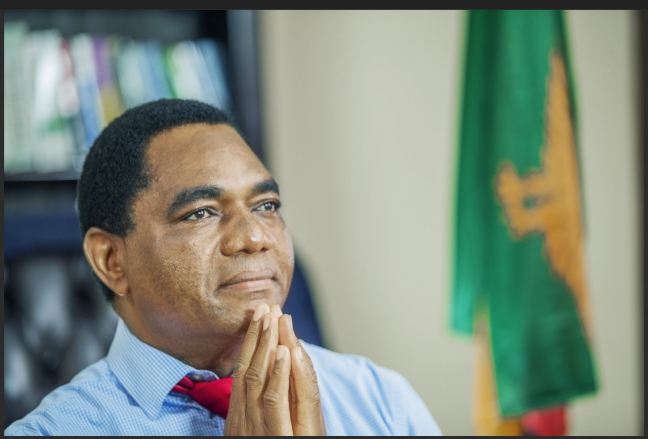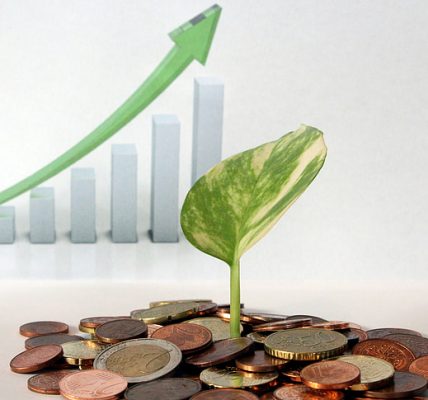(Part 1 of the “Credibility, Expectations and Growth” Series )
As of August 2021, the South-Central African country of Zambia has been “open for business”. The mining sector is crucial to the country and since 2010 it has played a significant role in its GDP. And yet, Hakainde Hichilema, arguably Zambia’s most pro-market reformist, faces a troubling conundrum. Despite being quick to break with past administrations and implementing investor-friendly mining policies, firms remain rather apprehensive in increasing the level of capital intensity and investment in the sector.
In the past, Zambia has been known to be exceedingly volatile in its policy, even when compared to its peers. This is important because policy volatility (whether actual or perceived) has a particularly pernicious effect in placing emerging economies in bad growth equilibria, one of low-confidence and low-growth. This equilibrium is a signal of a sub-optimal growth path and the standard prescription is often reform of one kind or the other, sometimes economic other times political.
But shifts to more optimal equilibria require not only paper reform, but the credible construction of stakeholder expectations. Why? Because expectations ultimately define the structure of the economy, and when rational expectations are the fore of agent decision making (as they invariably are), credibility becomes the basis for the political economy of reform. If expectations (policy stability – in terms of tax regimes, tax environments etc) are aligned with the direction of reform, that is to say, they are “believed”, then economic coordination is in tandem and the structure of the economy evolves in kind to move to a more stable equilibrium. But if they are not believed, agents have the incentive to deviate from reform, and it, ironically, becomes a structural trap.
Thus, Zambia’s mining reforms under Hichilema reflect the core dilemma of governance in weak states: even optimal policies cannot shift development equilibria if agents do not believe the rules will hold. The credibility of reforms depends on insulation from future pressures, which weak institutions cannot guarantee. This is especially true in the mining sector which is very capital intensive, more politically exposed and has a notorious record of being historically volatile, at least for most African countries. In mining, belief is everything, so much so that it is kind of a litmus test for broader policy credibility.
Policy Credibility in Zambia
To the state of Zambia’s mining tax regime, Nathan Chishimba, the country’s former Chamber of Mines President, described it as “Unstable…and with novel taxes not seen anywhere else in the world”. Next to Ghana, Zambia has the most number of changes in average effective tax rates, with an average of one tax change every 18 months since 2010. Nine out of the Zambia’s 11 tax regimes have been rated as lacking fiscal stability. In addition to shifts, the aggressiveness of these measures has been a pain for many firms. In 2018, the nationalist administration of Edgar Lungu introduced higher royalties, withheld VAT refunds owed to mining firms and removed tax deductibility.
A royalty is a payment made by a mining company to the government based on the value of the minerals they extract (not based on profit, but on the value of what is produced). If these values increase, the amount owed to the government increases. When royalties are non-tax deductible, they do not contribute to the overall income tax being paid. In fiscal regimes where royalties were not tax-deductible, companies face double taxation (corporate tax + royalty payments). These moves, coupled with failure to handle mining rights and the slow issuance of licences by the Mines and Minerals Ministry, have ruined the mining sector’s reputation in the eyes of both domestic and international investors as a suitable environment for long term business.
While frequent policy changes are common for resource rich countries, the case of Zambia has shown persistent effects on growth. The impact on investment has been tangible. Production has since fallen, even despite strong performances of copper that make up 69% of the country’s total exports and 4% of global output. By 2019, mining companies withheld over $650 million in planned investments due to the volatile policy climate.
Hichilema’s Reforms
Since his election, Hichilema’s fiscal strategy has been dominated by the need to stabilize the tax environment and spur investment. The first goal was to undo the damage of the previous administration that treated royalties as non-deductible, a move strongly criticized by the industry and that became a major disincentive to production. The 2023 National Budget would reverse this stance by including the deductibility of mineral royalties for corporate income purposes.
The budget also encouraged competition by lowering the barrier for mergers and acquisitions by reducing the property transfer tax on mining rights from 10% to 7.5%. In an attempt to formalize taxation practices across the board, a new graduated presumptive tax for small scale miners was introduced to lightly tax their production. There were also strides to make the taxation process more equitable. Technical tweaks to Zambia’s sliding scale royalty systems lowered the effective rate at even higher copper prices for miners.
Overall, Hichilema’s reforms have since been received positively by investors and analysts. In fact, First Quantum Minerals, Zambia’s largest copper miner, saw these moves as so beneficial that its stock price jumped nearly 5% when the reform was announced. Barrick Gold, a gold miner in Zambia, approved almost $2 billion to expand mining output, explicitly citing the government’s steps towards restoring confidence in the sector. Exploration and activity around the country’s mineral reserves has jumped as exploration budgets hit a ten-year high as key players relish at new prospects. Between 2022 and mid-2024, Zambia garnered over $7 billion in investment pledges for new and expansion projects in mining.
If one thing is certain, it is that the strong pro-business stance and the initial steps at regulatory consistency have enabled striking votes of confidence from investors all over. This direction will go a long way in reassuring a bashful industry
Investor Sentiment
Even with all of this, investor sentiment remains disjointed with the current ambience of reform. The government, with its sweeping regulations and ambitious targets to triple copper production to 2 million tonnes by 2032, has continuously signalled to investors that mining lies at the heart of its economic strategy.
And yet, the mining sector has remained cautious and conservative even in its optimism. Hichilema has not quite been able to convert the positive state of the country into the Foreign Direct Investment Flows one would expect. Deservedly so. A legacy of mistrust still lingers over the mining fields of Zambia. This mistrust is the result of rational expectations that price in previous occurrences and present realities. A misread of government credibility could cost a mining firm hundreds of millions, especially when it has assets with long lifespans that can generate high sunk costs. There are incredibly high risk premiums that come with delays or unfulfilled commitments.
For one, the reforms have not extended to softening the overall tax burden for mining firms. While they can certainly be seen as steps towards this, the fact remains that Zambia hosts some of the highest effective tax rates in the entire world. Most of this can be attributed to the country’s debt crisis which we will cover shortly.
Investors are also acting on multiple other layers of risk perception. For instance, state capture and resource nationalism have harmed the credibility of the Zambian government. Under the previous administration, the state holding company ZCCM-IH seized majority control of Mopani Copper Mines from Glencore in 2021 and the government forcibly liquidated Konkola Copper Mines in 2019. These high-profile interventions raised concerns about the security and sanctity of contracts. Pair this with the fact that firms have to deal with arduous permitting and licencing approval processes that slow down projects and the hesitation to invest starts to make more sense.
Zambia’s Debt Restructuring and the Influence of China
Investors are also not just watching policy reform, they are observing Zambia’s fiscal manoeuvrability. Fiscal pressure in the past has historically led to punitive measures on the mining sector.
In the past decade, Zambia has been under significant debt distress. It was the first African country to default on its sovereign debt in 2020. This explains persistent high tax rates despite the need to offer a competitive mining environment and the inability to invest in more robust institutional infrastructure that makes doing business in the country attractive to multinationals.
Like most countries in dire fiscal positions, it has since then turned to the G20s Common Framework mechanism to restructure its debt. China, however, being Zambia’s largest bilateral creditor, has considerable leverage over the pace and terms of this process. Since 2023, China had been considerably dilatory in its responsibility to ensure a fair negotiation of terms. It was heavily reluctant to offer any sort of deep debt relief or to accept losses on its loans. The protracted limbo contributed to Zambia spending two-plus years in default without a deal, undermining investor confidence and complicating the Hichilema government’s fiscal plans.
By mid-2023 however, China softened its approach and ultimately adhered to some form of relief. Having China on board for debt relief enabled Zambia to restructure debt of about $8 billion and restore some semblance of fiscal stability. It also secured $1.3 billion in IMF funds to reallocate to productive sectors. But the unpredictability of these negotiations injected uncertainty into the outlook of several investors. And the fact that China’s influence on Zambia’s credit profile is large makes even significant advancements in restoring stability much less of a stepping stone than a meagre accomplishment.
Institutional Infrastructure
Paper reform only signals reformist intent, but it is not enough to create incentive compatible behaviour from stakeholders, as has been shown clearly before. But interestingly, Hichilema has made efforts to institutionalize these reforms to some extent.
Two key institutions under the Hichilema administration are the Ministry of Mines and Minerals Development, which regulates licensing and compliance, and the Zambia Revenue Authority, which administers tax collection. Historical weaknesses in these institutions have exacerbated policy instability.
In the late 2010s, the Ministry of Mines faced criticism over slow issuance of mining licenses and the lack of transparency in how rights were allocated, leading to a backlog of lucrative projects stuck waiting for approval. To address this, the Hichilema administration created the new Minerals Regulation Commission to strengthen oversight. By taking some functions out of the core ministry and into specialized agencies, there was reduced political interference in technical decisions.
The Zambia Revenue Authority faces its own set of challenges. Mining taxation is complex and involves monitoring various things like production volumes, prices and trade. The ZRA had struggled with this when dealing with multinational mining companies. In 2024, the Commissioner General notes that the ZRA staff “simply do not have the capacity and skills required to audit mining companies”. The effects of this have been twofold: underreported companies have resulted in massive potential revenue losses, and heavy-handed disputes when the department suspects evasion have been massive and out of proportion. When ZRA claimed the heavily disputed claim of $7.9 billion in unpaid duties from major copper miners, an adversarial atmosphere of mistreatment was created. Alongside IMF relief, support for capacity-building and training in advanced audit techniques has been introduced such that the country is better equipped to fairly and efficiently collect mining taxes.
In light of this, the persistence of limited investor participation still causes some head scratching. But perhaps it was an overestimation of credibility capital? Reforms enter a sort of “credibility ledger” that is often cumulative and sticky. If one good reform does not magically change the way firms operate, partial insulation and thin institutionalization certainly won’t.
Zambia’s current mining and fiscal strategy is a test of whether a government emerging from a history of volatility can establish a new credible equilibrium. Hichilema’s efforts; reversing some of the most investor-deterring tax policies, reassuring investors with pro-business rhetoric backed by concrete actions, and re-engaging with international finance institutions to restore macroeconomic stability, directly address the expectations gap created by years of instability. Investors will be looking for a track record of a few years with no sudden U-turns in mining policy.
If Zambia can maintain the stable tax regime it has now put in place, each passing quarter will build confidence that “this time is different”. Policy prescriptions in this case are few not because there is nothing to be done, but because what has already been done until this point requires a quiet consistency to truly be optimal. Expectations are formed over long periods of time and the resulting effects on the economy are anchored on assessments that carefully log in both the past and present. Credibility, in other words, is earned incrementally. And only through credibility can Hichilema and his government materialize their toil.






